Clearing the docket: Summer 2025, part two
Looking over a list of the movies I’ve been watching over the past few months, I can see absolutely no pattern. My plan to become more systematic now that I have nothing but free time obviously hasn’t kicked in (yet). My interests seem to shift moment by moment, shaped by contingency rather than intention. To some degree, I seem to have reverted to an infant state in which my attention is constantly being distracted by various shiny objects that drift into view. And maybe that doesn’t actually matter; whether or not I seize control has no bearing on survival, so it’s probably okay to just let myself drift with the flow and stop worrying about whatever impression I might be making. And so, in no particular order…
*
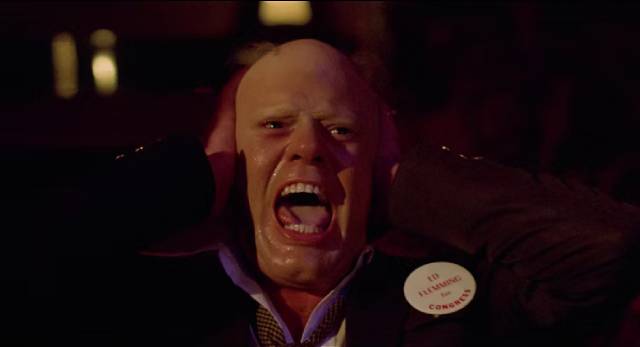
Blue Sunshine (Jeff Lieberman, 1977)
Jeff Lieberman directed only six features in thirty years, but managed to claim a small cult niche for himself, particularly with his first two movies – Squirm (1976), an awkward mix of horror and comedy which benefits from an extensive use of close-ups of blood worms, which are genuinely horrifying, and the following year’s Blue Sunshine (1977), which has been given the deluxe treatment by Synapse. The 4K restoration is excellent, obviously from a surprisingly good source given its mid-’70s low-budget origins. Lieberman has a better grasp on narrative and pacing here; a sudden rash of seemingly inexplicable homicidal attacks by wild-eyed people who have lost all their hair is eventually traced back to a batch of home-made LSD a decade earlier which somehow altered its college users’ DNA. Protagonist Jerry Zipkin has to keep ahead of the police as he solves the mystery since they suspect him of being the killer. The biggest problem with the film, unfortunately, is the casting of Zalman King as Jerry; an odd, intense actor, King has an off-putting screen presence (better used in James B. Harris’s Some Call It Loving [1973]), and here his strangely erratic behaviour seems to suggest that he himself may have been contaminated with the bad acid, though in the end it turns out he’s just prone to exhibiting suspicious behaviour. The three-disk, dual-format set is packed with extras – two commentaries, lengthy interview/conversation featurettes, festival Q&As, all focused on Lieberman and his career, plus his first short film The Ringer (1972) in two different cuts with a commentary. The third disk is a CD of Charles Gross’s interestingly varied soundtrack.
*
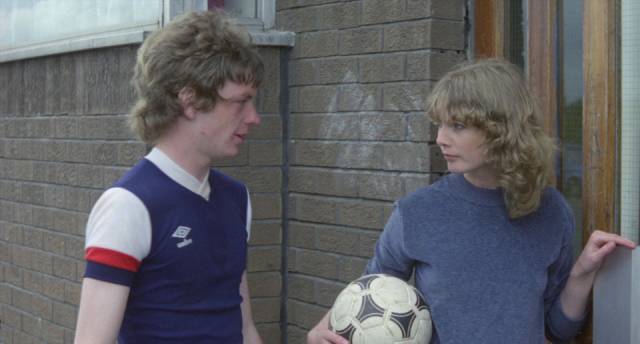
Gregory’s Girl (Bill Forsyth, 1980)
I have no idea why, but even as a fan of Bill Forsyth’s films – That Sinking Feeling (1979), Local Hero (1983), Comfort and Joy (1984), the underrated Being Human (1994) – it’s somehow taken me forty-five years to get around to his breakthrough movie, Gregory’s Girl (1980). Turns out it was well worth the wait as this story of an awkward Scottish teenager (John Gordon Sinclair) navigating his first feelings of attraction to a girl (Dee Hepburn) is funny, charming, and full of Forsyth’s off-kilter observation of human behaviour. It feels fresh and undated even after all this time, displaying Forsyth’s skill at getting nuanced yet seemingly effortless performances from a largely inexperienced cast. For all the emotional torment felt by the characters, it almost makes you wish you could go back and relive those painful formative years again. The transfer on the BFI Blu-ray has a pleasing natural look, adding to the sense that Forsyth was merely observing these kids rather than shaping their characters. There are two commentaries – with Forsyth and members of the cast – interviews with the director and co-star Clare Grogan, a thirty-fifth anniversary Q&A, and a session with school kids asking Forsyth about filmmaking.
*

Flying Clipper (Hermann Leitner & Rudolf Nussgruber, 1962)
The development of new cinematic formats often leads to a display of spectacle for its own sake. For years, IMAX was used almost exclusively for often vapid documentaries running less than an hour whose only purpose was to wow the audience with displays of nature and technology – underwater life, tropical forests, volcanoes and space walks with the Earth as a backdrop. It was much later that narrative filmmakers began to use the format to make their movies bigger and more immersive. A couple of decades earlier, the same process occurred with new ultra-wide formats like three-strip Cinerama and 65mm and 70mm film stock. Although these were more quickly adopted for narrative, spectacle was still the chief aim of movies like How the West Was Won (1962). But in the ’50s and ’60s, epic travelogues seemed to predominate, offering glimpses of exotic places and customs to those who couldn’t afford to travel themselves. Flying Clipper (1962) was a German production which followed a sailing ship crewed by Swedish naval cadets on a voyage around the Mediterranean (its U.S. title was Mediterranean Holiday). Although rather trite observations are provided in an overly flowery narration by Burl Ives, the imagery supplied by five different cinematographers offers a lot of eye candy, both on the ship itself with its elaborate rigging and billowing sails and in the varied landscapes of Italy, Greece, Lebanon, Egypt, Portugal and places in between. It all becomes a bit exhausting over 158 minutes, though the filmmakers occasionally try to inject a little drama (a cadet is struck by appendicitis and has to be quickly transported to an American naval ship for emergency surgery; a lengthy sequence depicts the annual car race through the narrow streets of Monaco). Because the aim is spectacle, there’s ultimately not a lot of local atmosphere displayed in the various ports of call, so the film possesses only limited documentary value. The 4K restoration, given the condition of the original 65mm negative, is a bit uneven, but a featurette on the transfer shows just how much has been salvaged from a seriously faded source. The dual-format release from Flicker Alley includes several interview featurettes about the production and the format, and there’s a choice of no less than eight different language tracks including the original German and English.
*
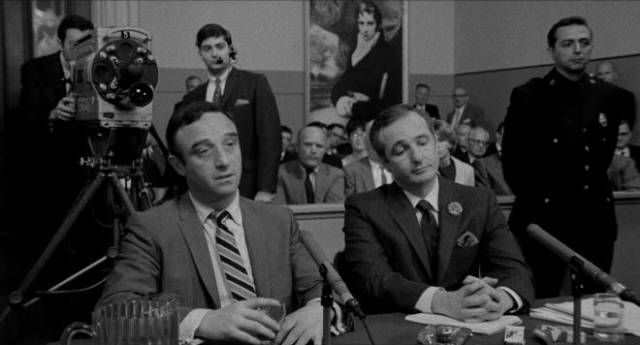
The Plot Against Harry (Michael Roemer, 1971)
My viewing of The Plot Against Harry (1971) gained added, unexpected resonance when news of director Michael Roemer’s death came a few days after I watched the film. The second of only three features, it was shot in the late ’60s, failed to find a distributor and eventually resurfaced in 1989 with successful screenings at the Toronto International Film Festival and the New York Film Festival. Shot more or less on the fly, documentary-style, it’s a fascinating time capsule of New York which also, paradoxically, seemed to be ahead of its time. It’s a slice-of-life glimpse of a small-time Jewish gangster who emerges from a brief stay in prison to find that things have changed on his turf. The ethnic make-up of his neighbourhood has shifted and the men who used to work for him, Black and Puerto Rican, have set up in business for themselves. And meanwhile, he has to deal with family members who aren’t aware of his criminal activities, pressure from a political committee investigating organized crime, and a brother-in-law looking for money to invest in a bar mitzvah business. Something like an ethnographic study of a very particular community, it’s also a low-key, slow-burn comedy of character in which there are no big plot points, just a steady accumulation of behavioural observations which create as pertinent a portrait of the intersections of crime, capitalism and immigrant culture as The Godfather (1972), but without any of the grandiose romanticism. The Film Desk Blu-ray has a very pleasing transfer of Robert M. Young’s evocative black-and-white cinematography, and several extras recount the story of the film’s unusual history (its rediscovery occurred when Roemer had a tape transfer made to show his children and found the technician laughing where back in 1971 audiences and distributors had remained stonily perplexed; heartened by this response, Roemer submitted the film to the Toronto and New York festivals) – there’s an on-camera interview with Roemer and Young from 2005, an audio interview with the director from 1990, and a 2023 Q&A from Film Forum.
*
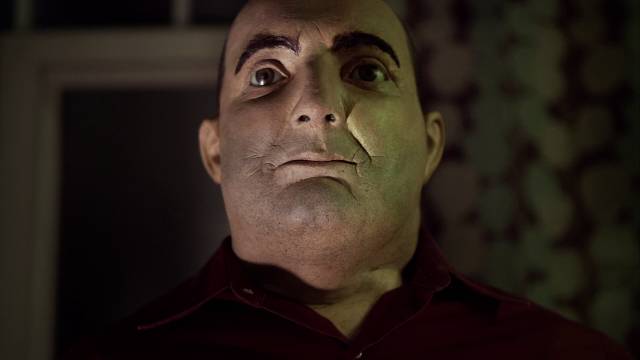
Abruptio (Evan Marlowe, 2023)
Six years in the making, Evan Marlowe’s Abruptio (2023) is a disturbing black comedy which makes something unique out of the uncanny simulation of human characters with remarkably expressive life-size puppets. While there’s often something off-putting about characters created with CGI, here the physicality of the latex figures occupying real-world spaces draws the viewer in even as it alters perception. The closest thing to this film’s effect I can think of is Charlie Kaufman’s Anomalisa (2015), but that film has a completely constructed world which situates it in a more familiar context of classic stop-motion animation; here, the constructed characters move through real spaces, adding another level of life to the puppets. As for the story, it’s a dystopian nightmare in which sad sack alcoholic Les Hackel (voiced by James Marsters) wakes to find that a bomb has been surgically implanted in his neck; texts inform him that he must embark on a series of violent crimes or die. The violence, although it involves puppets, is intense and graphic, and the effect these increasingly extreme acts have on Les gradually peels away layers of self-delusion until he finally comes face-to-face with a terrible action he has fought to suppress. What might have seemed like a gimmick proves to be a resonant thematic choice which reflects Les’s enslavement to his addiction and the complicated ways in which his mind tries to defend itself from the unbearable knowledge of what alcohol has done to him and caused him to do. In addition to the impressive puppets, the film features an excellent voice cast which includes Jordan Peele, Robert Englund and Sid Haig (in his last role) in addition to Marsters. Although there are two commentaries on the Anchor Bay Blu-ray (one with Marlowe and his producer wife, the other with puppeteer Danny Montooth), disappointingly there’s only a very brief featurette with some interview clips but no behind-the-scenes look at how the puppets were created and animated.
*
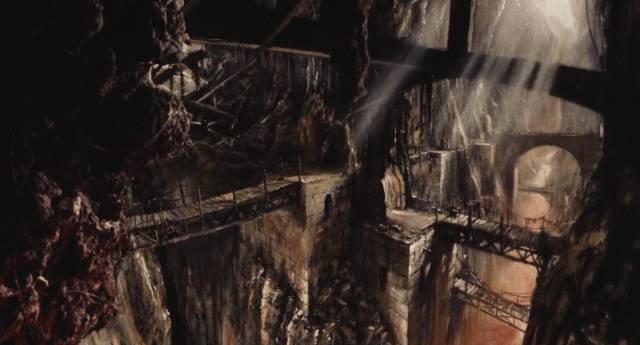
Empire of the Dark (Steve Barkett, 1991)
I admire ambition which strives so hard to overcome not only material limitations but also the challenges of limited talent. Steve Barkett was mostly an actor in low-budget genre movies who has the presence of a slightly chunky suburban dad taking his kid to soccer practice. Yet in his thirties, he wrote, produced, directed and starred in a pair of genre movies in which he cast himself as a hero, but more importantly put the majority of his effort into do-it-yourself practical special effects which, while seldom convincing, are a pleasure to see if, like me, you love that kind of thing. In The Aftermath (1982), Barkett was an astronaut who returns to a post-apocalyptic Earth overrun with vicious gangs. In Empire of the Dark (1991), he’s a private detective who runs afoul of an inter-dimensional cult and the demon they worship. Faced with the choice of saving the woman he loves or her newborn child from sacrifice, he opts for the kid and spends the next two decades haunted by what he lost. But wait, turns out she’s still alive in the demon realm and he heads there to save her, armed with a sword. Cardboard sets, double-exposure rivers of lava, and hordes of ninja demons have to be dealt with before he can bring his woman back to this world and close the portal just before the demon breaks through. I can’t say the filmmaking is good in a traditional sense, but it’s certainly entertaining. VCI’s three-disk set treats this scrappy low-budget effort like Citizen Kane, starting with a 4K scan from the original negative, which is detailed and colourful while displaying all the flaws inherent in the numerous effects shots. There’s a commentary from Barkett and his son (who costars), and several interviews with Barkett, including a 79-minute podcast session on its own separate DVD.
*
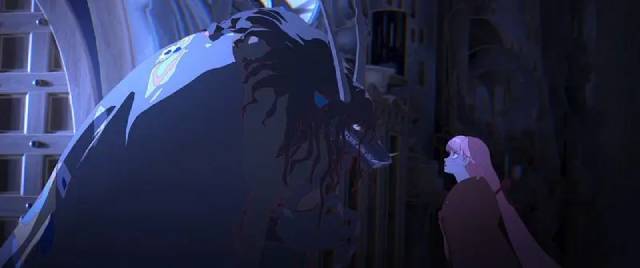
Belle (Mamoru Hosoda, 2021)
Although the masters at Studio Ghibli have tended to overshadow Japanese animation, there are others who also make very strong anime features. Mamoru Hosoda had a prolific decade directing for television series before his feature The Girl Who Leapt Through Time (2006) launched a theatrical career, with a new film released every three years. While his stories range from yokai-influenced fantasy (Wolf Children [2012], The Boy and the Beast [2015]) to complex time-bending narratives (Girl, Mirai [2018]), he’s also been drawn to the possibilities of virtual worlds where characters can assume alternate personas to escape from, or resolve, their real-world problems. In his most recent film, Belle (2021), shy teen Suzu casts off her insecurity and becomes an enormously popular singing star in a vast virtual world; her celebrity attracts the attention of an angry, violent beast who’s being pursued by the world’s controlling authorities and Suzu sets out to discover the beast’s real-world identity in the hope of helping to ease the source of his obvious pain. Her efforts not only help to rescue two boys from their abusive father; they also transform the virtual world and Suzu herself. Hosoda contrasts Suzu’s mundane home and school life effectively with the excesses of the digital realm and ties it all together with an emotionally resonant narrative about damaged children helping one another. The Shout! Factory/GKids Blu-ray includes more than two-and-a-half hours of featurettes on the making of the film.
*
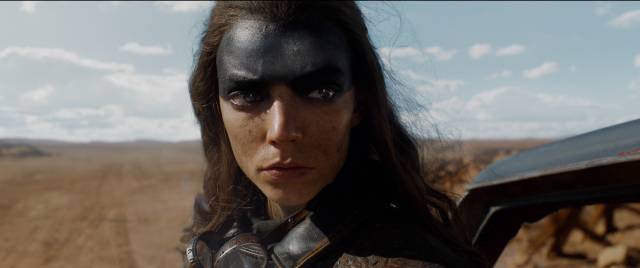
Furiosa: A Mad Max Saga (George Miller, 2024)
Paradoxically, I always enjoy revisiting George Miller’s violent post-apocalyptic world – despite the death, destruction and suffering, the Mad Max series is exhilarating on a purely cinematic level and even as he approaches eighty, Miller has lost none of his skill at creating spectacular, visceral action scenes. While the world may remain familiar, he has taken the story in interesting directions since rebooting the series in 2015 with Fury Road. The original trilogy was a classic narrative of a lone, damaged hero simply trying to survive, who through unsought human contact eventually finds some kind of redemption. But in Fury Road, Miller all-but sidelined Max to focus on a female character asserting her own independence and power in a harsh, male-dominated world. In Furiosa (2024), he leaves Max altogether and creates an origin story for that female character (Charlize Theron in Fury Road, Anya Taylor-Joy here). He also expands his world-building by fleshing out the three centres of power controlled by warlords – Water Town, Gas Town and Bullet Town, which exist in an uneasy balance as each needs the others to survive, a balance disrupted by Furiosa’s determination to find (or make) a better world. Although the hair-raising vehicular mayhem which made the original trilogy so powerful has inevitably given way to some degree to CGI, here as in Fury Road Miller continues to create spectacular practical stunts on a scale most other filmmakers wouldn’t dare. Let’s hope he manages to make the third part of this new trilogy which is currently in pre-production; with Furiosa ending at the point where Fury Road began, the next movie will apparently start where Fury Road ended. I hope I get to revisit this world one more time. The Warner Brothers Blu-ray includes a one-hour making-of, and a featurette focusing on the film’s action centrepiece with Furiosa hanging on to the underside of a truck under attack.
*
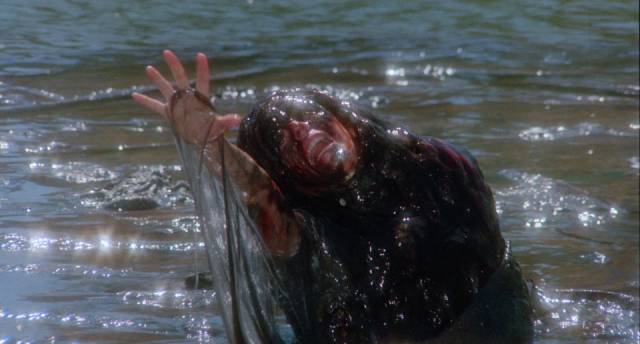
Creepshow 2 (Michael Gornick, 1987)
Michael Gornick, a long-time collaborator with George A. Romero in various crew capacities, including cinematographer on five of Romero’s features from Martin (1977) to Day of the Dead (1985), got his chance to direct a theatrical feature with Laurel Entertainment’s follow-up to the Romero-Stephen King horror anthology Creepshow (1982). That modestly successful homage to EC Comics and Amicus leaned more on comedy than horror; Creepshow 2 (1987), the rather thread-bare sequel, although scripted by Romero from King’s stories, ditches the comedy, but its horror elements feel perfunctory and underdeveloped and Gornick’s direction doesn’t rise above the level of his work on a number of television series. A wraparound animated frame attempts to emulate the comic book inspirations, but the three stories themselves are rather obvious. In “The Raft”, two couples go for a swim in a remote lake where they’re eaten one by one by a giant amoeba which looks like a clump of plastic bags; in “The Hitch-Hiker”, a woman rushing to get home after a session with her lover, hits a hitch-hiker and leaves the scene, only to find the dead man popping up repeatedly along the way. Most troubling is “Old Chief Wood’nhead”, in which a nice old white couple who run a failing general store where they give credit to the local indigenous population are brutally murdered by an angry young man from the reservation during a robbery; this so troubles the wooden Indian in front of the store that it weeps and comes to life in order to avenge the couple. The inversion of America’s genocidal history – nice white settlers callously killed by native savage – passes without comment but leaves a bad taste. I watched this on the Image bare-bones Blu-ray, which has a fairly lacklustre transfer; apparently the extras-laden Arrow edition is much improved.
*
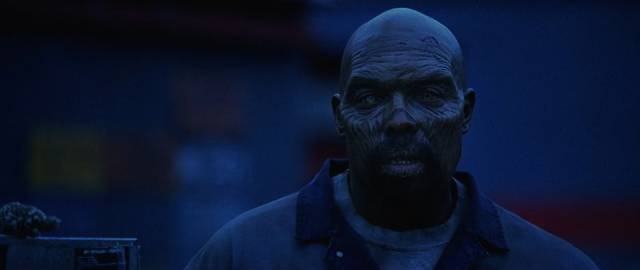
Land of the Dead (George A. Romero, 2005)
After a fallow decade in the 1990s, George A. Romero moved to Toronto to make the problematic Bruiser (2000). Despite the mixed results on that feature, he found the city much to his liking and stayed on, although it was five years before he managed to put together another project. Perhaps acquiescing to the inevitable, this was a return to his best-known territory, launching a final zombie trilogy which, however, didn’t achieve the impact of Night, Dawn and Day of the Dead. I’m a fan of all three films, though, and appreciate that Romero continued to explore new ways to approach the zombie apocalypse. In Land of the Dead (2005), he explores class conflict in his fallen world – the wealthy live in a protected urban enclave, served by mercenaries who enforce their self-serving rules, while an oppressed proletariat are given bread and circuses to suppress any impulse to throw off the billionaires’ yoke. Meanwhile, the dead are becoming more sentient, relearning the use of tools (and weapons) and working together to wage war on the morally bankrupt humans. With a bigger-name cast (Dennis Hopper, John Leguizamo, Asia Argento, Simon Baker, Robert Joy), the film lacks the home-grown grittiness of the original trilogy, but Romero continues his effective post-apocalypse world-building and stages the action well. The most interesting element, though, is the Black working-class zombie Big Daddy (Eugene Clark), whose growing awareness begins to make him seem more sympathetically human that all the back-stabbing living characters. The film is very well served by Shout! Factory’s three-disk, dual-format edition, with an impressive 4K scan from the original negative, two archival commentaries, and more than three hours of archival featurettes covering the production spread across two Blu-rays.
*
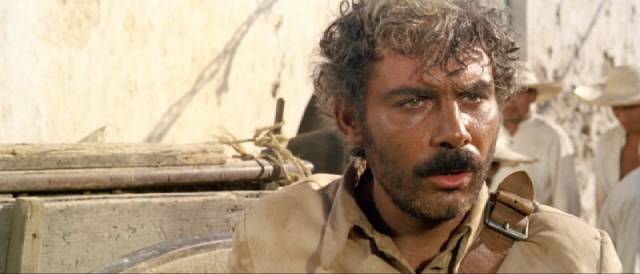
A Bullet for the General (Damiano Damiani, 1967)
Given the social and political concerns of Damiano Damiani’s contemporary films – particularly those dealing with the Mafia and its deeply-rooted influence in Italian politics – it’s not surprising that his Mexican revolution movie, A Bullet for the General (1967), is a complex, politically nuanced work which transcends the spaghetti western genre which was already becoming more routine and cliched by the late ’60s. Essentially the story of a bandit’s moral awakening during the chaos of the revolution, it also delves into the external forces (particularly American imperialist interests) which complicate the struggle of an oppressed population to overthrow a cruel aristocracy. The bandit is El Chuncho (Gian Maria Volontè), who steals weapons to sell to the revolutionary army. Self-serving, with little interest in the politics, he’s contrasted with his brother El Santo (Klaus Kinski), a priest who has whole-heartedly committed himself to the fight (he tosses grenades in the name of the Father). El Chuncho befriends an American named Tate (Lou Castel), who seems cool and extremely adept in the use of weapons, and they journey together to a rendezvous with General Elias (Jaime Fernández) to deliver a wagon-load of guns (including a powerful machine gun). Along the way, they witness the horrors of the conflict and El Chuncho is torn between helping the peasants fight and making money. It seems that Tate is more determined to get the guns to the general than El Chuncho, but when they arrive at the revolutionaries’ camp, it finally becomes clear that Tate has just been using the bandit to get to the general, whom he’s been hired by American interests to assassinate. This revelation finally awakens El Chuncho’s conscience and turns him into a genuine revolutionary with a clear purpose. Blue Underground’s Blu-ray includes both the international cut and the slightly shorter U.S. cut, the former offering both the original Italian soundtrack and the English dub. There’s a 50-minute interview with Damiani, plus a supplementary DVD with a two-hour documentary on the life and work of Volontè, a politically committed leftist whose career choices reflected his radical beliefs.
Comments